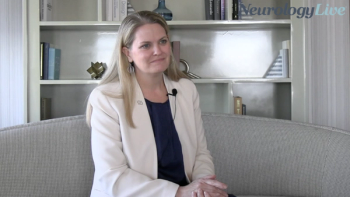
Clinicians’ Role in Addressing the Neurologist Shortage: Jennifer Majersik, MD, MS
The division chief of vascular neurology at the University of Utah discussed the individual role that clinicians and neurologists can play to increase interest in the field of neurology. [WATCH TIME: 2 minutes]
WATCH TIME: 2 minutes
“The 10 neurologists who wrote this paper, all of us were [only] a little unaware of how bad the problem was, until we started digging into the data. And then, through this program we were in, we would meet every month, and we started sharing stories about what we were doing individually to help improve it. That’s when we became aware that there are the small steps that each of us can make.”
The ongoing shortage of neurologists in the US is an area of concern, especially due to the aging population and their increased risk of developing neurologic diseases and conditions. Jennifer Majersik, MD, MS, chief of the division of vascular neurology and professor of neurology at the University of Utah, discussed a recent report commissioned by the American Academy of Neurology, entitled “A Shortage of Neurologists – We Must Act Now,” which she authored alongside 9 colleagues.
When asked by NeurologyLive about what current neurologists and specialists can do to address the shortage, Majersik suggested speaking to medical students about neurology, and “putting your best face forward” by expressing a love of the field. Piquing interest early on and highlighting how fulfilling a career in the neurosciences is may also be helpful, she said, particularly if invited to speak or present at a high school. Speaking to administrations within the health care field or academic institutions is another area of opportunity, whether that is to ensure that neurologists are receiving fair compensation or to fund educational opportunities for team members.
Majersik further commented on the importance of informing patients about the shortage of neurologists, as they too play a vital role in raising awareness, particularly through patient advocacy groups.
REFERENCE
Majersik JJ, Ahmed A, Chen IA, et al. A shortage of neurologists – we must act now: A report from the AAN 2019 transforming leaders program. Neurology. 2021; 96(24). doi:10.1212/WNL.0000000000012111
Newsletter
Keep your finger on the pulse of neurology—subscribe to NeurologyLive for expert interviews, new data, and breakthrough treatment updates.


































